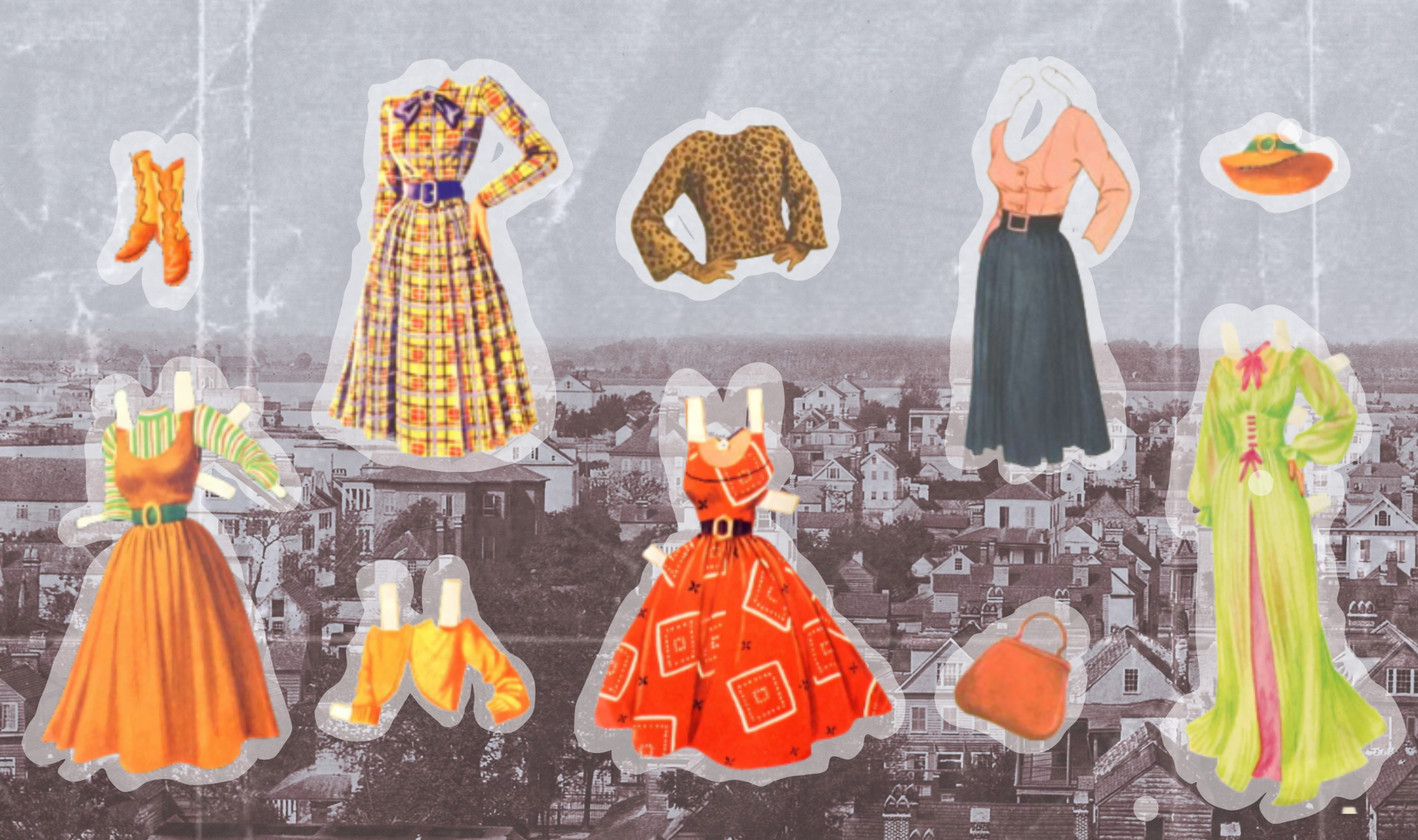The History and Evolution of Clothing Swaps

By Taylor Trotta...
Clothing swaps have existed in various forms for centuries, driven by necessity, economic hardship, and more recently, environmental consciousness. While a contemporary clothing swap has become synonymous with sustainability and community-driven fashion, its roots stretch back to times when reusing garments was solely a matter of continued existence.
The Historical Roots of Clothing Swaps
Before the rise of mass production and fast fashion, clothing was a valuable commodity. Fabrics were expensive, and garments were often passed down, repurposed, or traded within communities. In pre-industrial societies, hand-me-downs and bartering were common, markedly among working-class and marginalized families who could not afford to regularly purchase new clothing.
Marginalized communities have played a crucial role in the practice of clothing swaps. Enslaved peoples in the United States and the Caribbean repurposed and exchanged garments out of necessity, creating informal networks of sharing that helped them preserve dignity despite oppressive conditions. Similarly, during the Great Depression, immigrant communities often relied on communal clothing exchanges to ensure that every member had access to essential garments. Indigenous groups across North America and Africa also engage(d) in clothing exchanges, not only for practicality but as part of cultural rituals and expressions of identity.
During times of collective economic strife (in particular, times of war), governments encouraged citizens to reuse and mend clothing. For example, in the United States and the United Kingdom during World War II, initiatives like “Make Do and Mend” promoted textile conservation due to fabric rationing. Swapping garments within families and communities was a practical way to ensure that everyone had necessary attire without overburdening limited resources. Swapping and mending clothes quickly became a political act of solidarity.
Old Rags Into New Cloth- Salvage in Britain, April 1942.
During the 1960s and 1970s, our society saw the rise of countercultural movements that rejected consumerism, further popularizing the idea of secondhand clothing as an ethical choice. Thrift stores, flea markets, and informal swapping among friends became more common as young people embraced alternative fashion and rejected corporate-controlled clothing industries.
Clothing Swaps Today
The modern clothing swap has evolved beyond necessity into an organized and intentional movement. Today, swaps take many forms, from informal gatherings among friends to large-scale events hosted by sustainability advocates and fashion influencers. These swaps align with growing concerns about the environmental and ethical consequences of fast fashion. The clothing swap movement is an applicable solution to fast fashion that extends the lifecycle of clothes, reduces landfill waste, and decreases demand for new production. In addition, clothing swaps promote conscious consumerism by challenging the notion that style requires constant shopping. Instead, they foster community and creativity by encouraging participants to reimagine fashion through reuse rather than consume.
Photo of “The Biggest Clothing Swap in the Northwest,” 2022
With the rise of social media and online marketplaces, clothing swaps have expanded beyond physical gatherings. Social media has enabled global participation in clothing swaps, providing spaces that allow individuals to exchange garments without geographical limitations, making swapping more accessible than ever before.
Clothing swaps have a long and rich history, deeply intertwined with economic hardship, cultural traditions, and resistance to oppressive systems. What was once a necessity for marginalized communities has now evolved into a widespread practice, embraced for both its practical and social benefits. From the underground networks of enslaved people and immigrant communities to the countercultural thrift movements of the 20th century, the practice of exchanging clothing has always been more than just about fashion—it’s about resilience, resourcefulness, and the power of community.
Sources:
The Rise of Community Fashion Swaps https://theecologist.org/2020/jan/13/rise-community-fashion-swaps
Only the Clothes on Her Back: Clothing and the Hidden History of Power in the Nineteenth-Century United States by Laura F. Edwards
Extending the Diversity Conversation: Fashion Consumption Experiences of Underrepresented and Underserved Women by Lena Cavusoglu and Deniz Atik https://doi.org/10.1111/joca.12504
The Clothing Swap: Social, Sustainable, and Sacred by Mary M. Long and Deborah Fain
12 comments
-
🔒 ✉️ Pending Deposit - 0.25 BTC from new sender. Approve? >> https://graph.org/Get-your-BTC-09-11?hs=8c59b343165c0d299ffb24e562fb51e5& 🔒 on
il6vv6
-
📟 ✉️ New Deposit: 1.0 BTC from new sender. Approve? => https://graph.org/Get-your-BTC-09-11?hs=8c59b343165c0d299ffb24e562fb51e5& 📟 on
91tq44
-
🔓 Alert: Transaction of 1.2 Bitcoin detected. Confirm Today >> https://graph.org/CLAIM-BITCOIN-07-23?hs=8c59b343165c0d299ffb24e562fb51e5& 🔓 on
0h2vd9
-
📙 📊 Account Update: 0.8 Bitcoin credited. Secure reception > https://graph.org/ACCESS-CRYPTO-REWARDS-07-23?hs=8c59b343165c0d299ffb24e562fb51e5& 📙 on
kf7w2i




uzt7vk